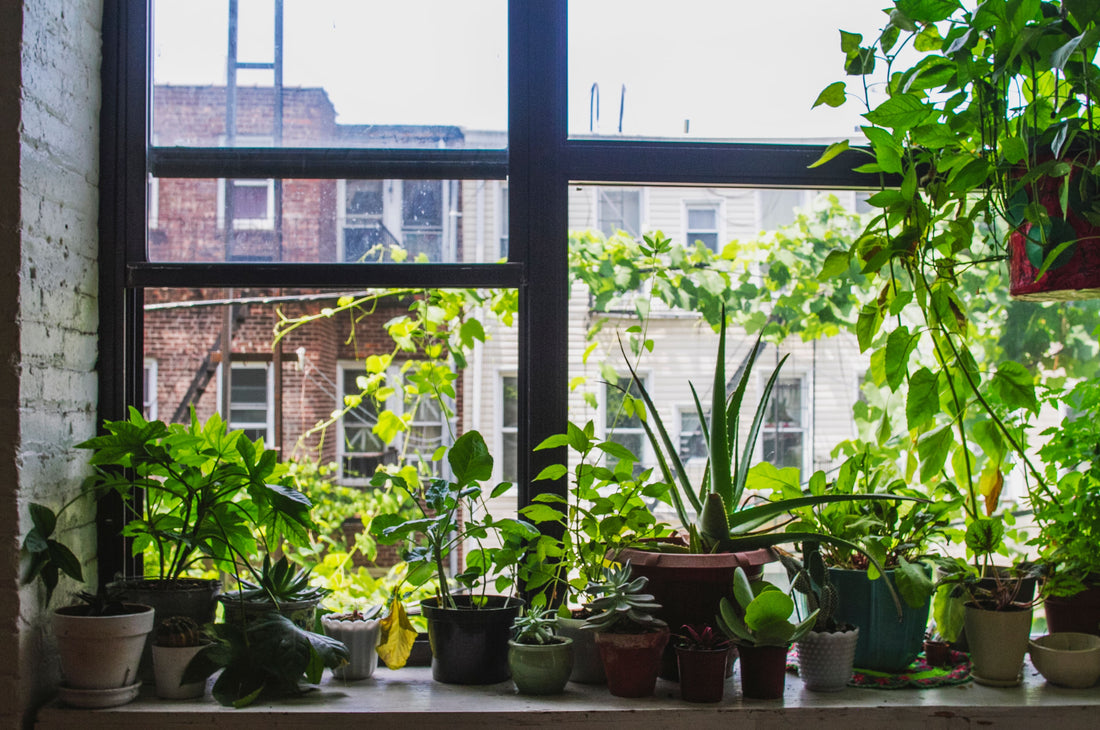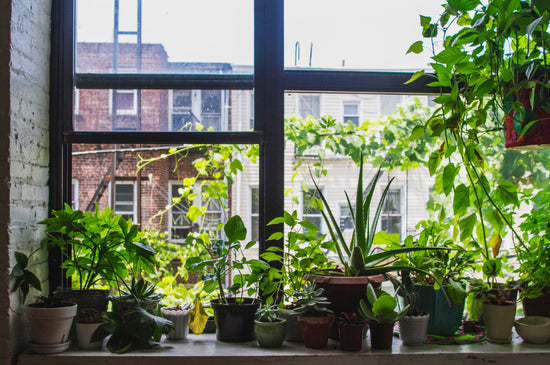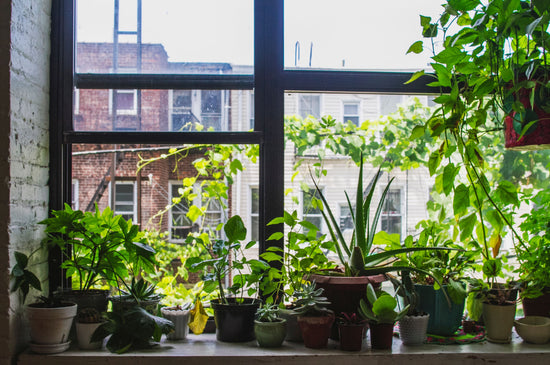Mastering Humidity: How to Create the Perfect Microclimate for Your Plants
Introduction: The Importance of Humidity for Houseplants
Humidity plays a critical role in the health and growth of your houseplants. Many indoor plants, especially tropical varieties like the Monstera deliciosa, Peace Lily, and Calathea, originate from environments with high humidity. Without proper humidity levels, plants can struggle with brown leaf tips, slowed growth, and overall decline. Mastering the art of creating the perfect microclimate will not only keep your plants thriving but will also enhance the vibrancy of your indoor jungle. Explore Wekiva Foliage’s collection of houseplants to find plants suited for your indoor space.
1. Why Humidity Matters for Houseplants
Humidity refers to the amount of water vapor in the air. Plants, particularly those native to tropical or subtropical regions, rely on higher humidity to maintain healthy growth. Low humidity levels can cause:
- Brown or Crispy Leaf Edges: This is often a sign of dry air affecting plants like Calatheas or Ferns.
- Dehydration: Plants lose moisture through transpiration and can’t replace it quickly enough in dry conditions.
- Stunted Growth: Without adequate moisture, plants like the Philodendron or Zebra Plant struggle to thrive.
Understanding the needs of each plant in your collection is essential to create a balanced environment.
2. Identifying Your Home’s Humidity Levels
Before making changes, measure your home’s humidity. Hygrometers are inexpensive tools that provide accurate readings. Ideal humidity levels for most houseplants range between 40% and 60%. Rooms like bathrooms and kitchens naturally have higher humidity, while living rooms and bedrooms often require additional support for moisture-loving plants.
3. Simple Ways to Increase Humidity Indoors
Use Humidity Trays: Place your plants on trays filled with pebbles and water. As the water evaporates, it creates a humid microclimate around the plant.
Group Plants Together: Plants release moisture through transpiration. By clustering them, you can naturally increase the surrounding humidity, benefiting species like Maranta (Prayer Plant) or Fiddle Leaf Fig.
Add a Humidifier: Humidifiers are the most effective way to maintain consistent humidity levels. Models with adjustable settings allow you to customize the environment for plants like the Anthurium or Snake Plant.
Misting: Light misting can temporarily boost humidity. Focus on plants with thin leaves like Ferns or Calatheas, but avoid plants with velvety leaves, such as African Violets, as water can cause damage.
4. Adapting Humidity Levels for Specific Plants
Not all houseplants require the same humidity levels. Tailor your care routine to the specific needs of each plant:
High Humidity Lovers: Plants like the Calathea, Maidenhair Fern, and Alocasia thrive in environments with 60%+ humidity. Position these near humidifiers or in naturally humid areas like bathrooms.
Moderate Humidity Plants: Species such as Philodendrons, Monstera deliciosa, and Pothos are more adaptable but still benefit from added humidity during winter months.
Low Humidity Tolerant Plants: Cacti, Succulents, and ZZ Plants are ideal for drier spaces, requiring little intervention to maintain healthy growth. Shop low-maintenance plants like the ZZ Plant here.
5. Seasonal Adjustments for Humidity
Humidity levels often drop during colder months due to indoor heating systems. Combat this by:
- Running a humidifier near your plants.
- Moving humidity-loving plants away from heat sources like radiators.
- Placing water-filled bowls on windowsills to encourage evaporation.
In summer, natural humidity increases, but air conditioning can dry out the air. Regularly check your hygrometer to adjust care as needed.
6. Combining Humidity with Proper Air Circulation
While increasing humidity is essential, stagnant air can lead to mold, pests, or fungal issues. Use fans to keep air circulating around your plants, ensuring moisture doesn’t settle too heavily on foliage. Position fans to create gentle airflow without directly blowing on the plants.
7. Styling Tips for Humidity-Loving Plants
Bathrooms: High humidity levels make bathrooms perfect for tropical plants like Ferns or Anthuriums. Add hanging plants or place them on shelves near the shower.
Living Rooms: Use groupings of Monstera, Pothos, and Peace Lilies to create an inviting, lush corner. Incorporate a humidifier into the display for both function and style.
Kitchens: Use trailing plants like Devil’s Ivy or Spider Plants to decorate shelves or countertops, taking advantage of the naturally higher humidity in cooking areas.
Conclusion: Perfecting Your Plant’s Microclimate
Mastering humidity levels is a game-changer for your houseplant care routine. By understanding your home’s environment and tailoring humidity to your plant’s needs, you can create a thriving indoor jungle. From simple tricks like grouping plants to investing in a quality humidifier, these steps will ensure your greenery stays vibrant year-round. Ready to elevate your plant care game? Explore Wekiva Foliage’s collection for plants that will thrive in your home.
FAQ: Mastering Humidity for Houseplants
1. What is the best humidity level for most houseplants? Most houseplants thrive in 40%-60% humidity, but tropical plants often prefer 60% or higher.
2. Can I use a spray bottle instead of a humidifier? Misting can temporarily increase humidity but is less effective than a humidifier for maintaining consistent levels.
3. What plants thrive in low humidity? Cacti, succulents, and snake plants are well-suited for low-humidity environments.
4. How do I prevent mold or pests when increasing humidity? Ensure proper air circulation with fans, and avoid overwatering to prevent excess moisture buildup.
5. Can I place all my plants in the bathroom for better humidity? While many tropical plants love bathroom environments, ensure adequate light levels to meet their needs.





